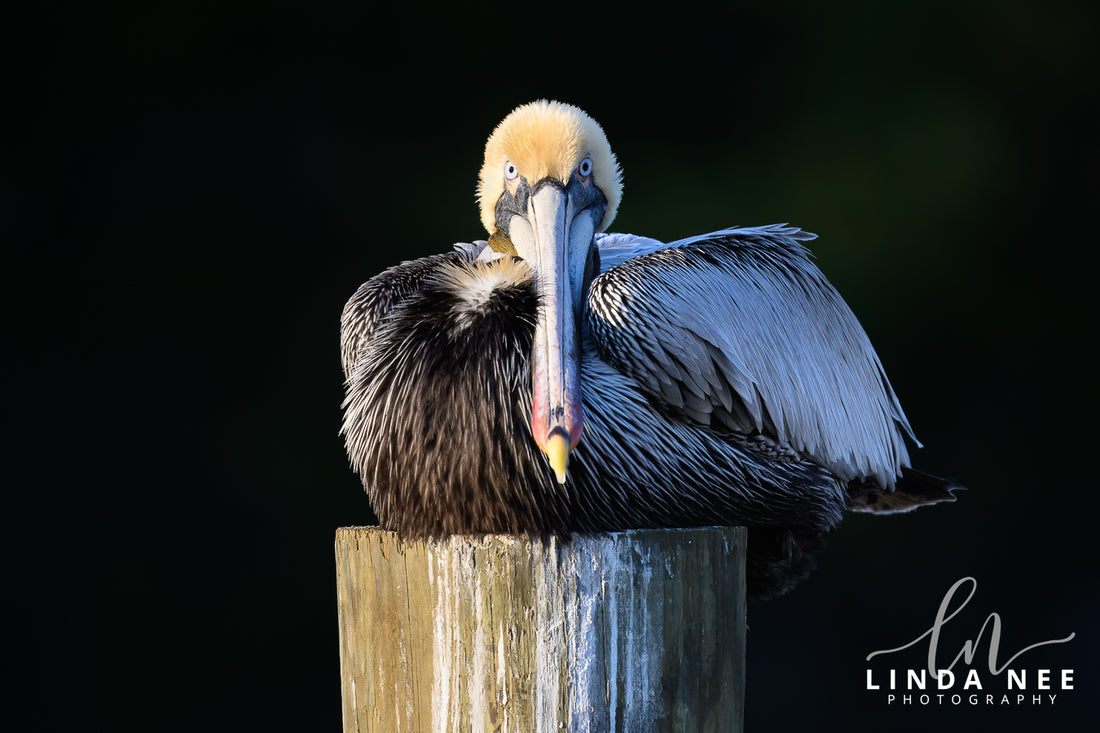
Discover the Fascinating World of the Brown Pelican
Share
The majestic and graceful Brown Pelican is a fascinating bird that can be found primarily along the east and west coasts of North America.
While visiting the Outer Banks, NC, I had the opportunity to photograph many of these unmistakable birds. Watching them as they fly low over the waves in single file, flapping and gliding in unison, was incredible, but nothing compared to seeing them dive for fish.
With its unique appearance and interesting behaviors, this bird is a subject of curiosity for many nature enthusiasts. So, let's dive into some Brown Pelican fun facts!
- Brown Pelicans are skilled divers with excellent eyesight and can dive from heights of up to 70 feet. They can submerge completely or partially, depending on the height of the dive, and come up with a mouthful of fish. Brown Pelicans also have built-in airbags to protect them from high dives.


- Brown Pelicans have large throat pouches that can hold up to three times more than their stomachs. They use their pouches and long bills to scoop up fish. They tolerate the pesky kleptomaniacal sea gulls, infamous for stealing fish from the Pelican’s beak as it drains water from its pouch in order to swallow the catch.
- Brown Pelicans don’t store fish in their pouch. They do use it to catch fish but immediately after draining the water from their pouch they swallow their catch. A pelican can eat up to four pounds of fish per day.
- Brown Pelicans make their own evaporative cooling system to dissipate heat by rapidly flapping the gular pouch, called a gular flutter, while their bill is open.

- Brown Pelicans have a wingspan of up to 6.5 feet and are efficient flyers that can glide just above the water.



- Brown Pelicans are very social and can be found in large flocks for most of the year. When flying together, they can form a straight line or a "V" formation.

- Brown Pelicans can live for 10–30 years. They hunt together, feed together, and nest together.

- Brown Pelicans faced population declines in the 1960s and 1970s due to the use of pesticides, including DDT. They were once endangered, but their status has since been upgraded to least concern.
The Brown Pelican is truly a remarkable bird with its diving prowess, expandable pouch, and captivating behaviors. Whether you're lucky enough to spot one along the coast or simply enjoy learning about these incredible creatures, the Brown Pelican never fails to leave a lasting impression. Cherish the Brown Pelican with a ready-to-hang metal photo panel for all to enjoy!

